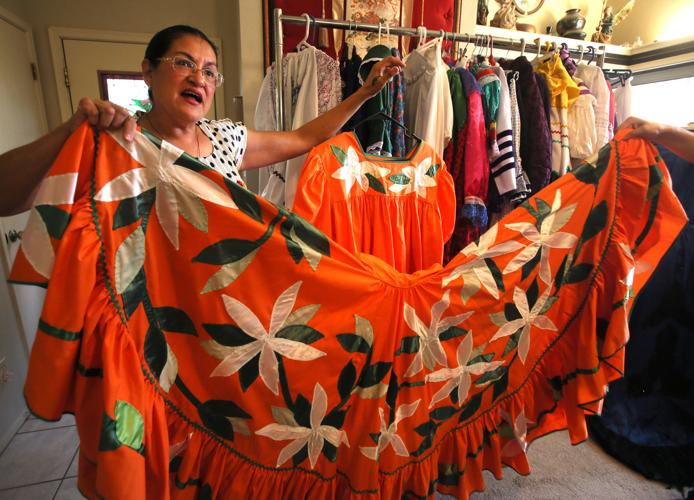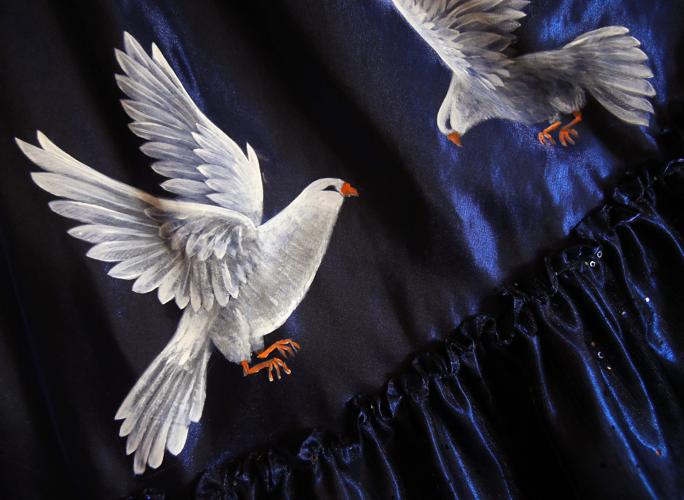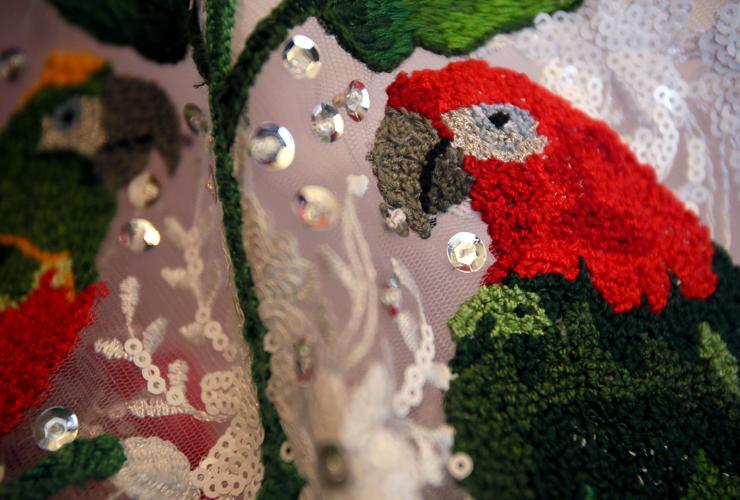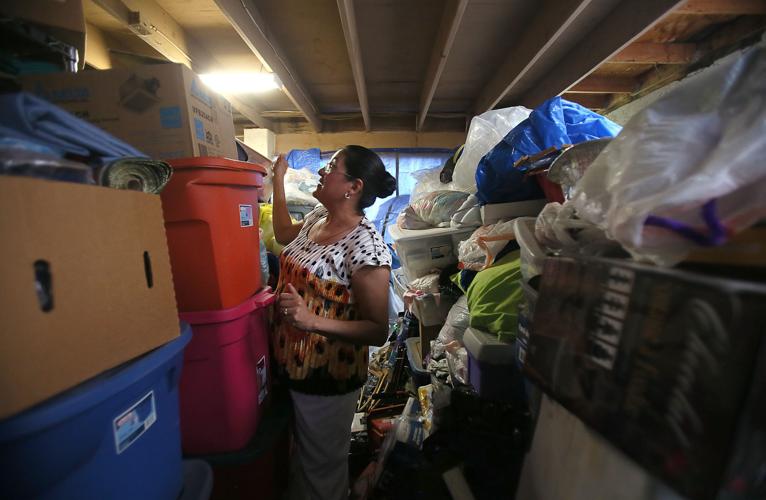At one time, Carmen Baron had a two-car garage.
Not any more.
The space is filled — nearly to the roof, actually — with shelves and plastic bins stuffed with fabric, ribbons and props for folklorico dancing. Tarped storage boxes, also filled with sewing materials, line the sidewalk leading to the Barons’ front door.
Inside their southwest-side home, a sewing machine and serger sit atop a kitchen island, and you can’t even see the top of the dining table because it’s entirely blanketed in material and sewing projects.
“We almost never eat there,” Baron, 56, said.
Sewing rules her life.
Specifically, it’s sewing and embroidering folklorico costumes that are her passion.
The married mom of two grown sons, Baron has called Tucson home since 1973 and has been volunteering her time since 1978 teaching folklorico dance to kids 1-18 and — as you’d expect from what you’ve already heard — sewing elaborate costumes for them, too.
Earlier this year, Baron received a commissioner award from Tucson Parks and Recreation for her thousands of volunteer hours at El Rio Center. As part of her nonprofit Danzacultura Mexicana, Baron also teaches at Saints Peter & Paul Catholic School. This summer, Baron was one of six artisans to receive a $2,500 Southwest Folklife Alliance Master-Apprentice Award. SFA is an affiliate nonprofit organization of the University of Arizona College of Social and Behavioral Sciences and the UA Southwest Center. It is the parent-producing agent of the annual Tucson Meet Yourself festival.
“The granular, most important work of cultural transmission often happens out of sight — in kitchens, backyards, barns or bedrooms, or in Carmen’s case, stitching and sewing behind the scenes what others will display in public,” said Maribel Alvarez, executive director of Southwest Folklife Alliance. “For us to have an opportunity to honor her steady hands and faithful labor on behalf of her Mexican heritage with this modest award brings great joy.”
Truth be told, Baron’s first application was actually rejected. Answers were limited to 1,000 words, and Baron said she wrote double that.
She can’t say enough about folklorico.
As a little girl growing up one of six children in Altar, Sonora, Baron said there was no folklorico to watch. But, she listened to the bandas at Mexican Independence Day fiestas. The music, she said, tickled her feet.
She remembers sitting on her mother’s lap as she sewed clothing and embroidered dish towels. When she got older, her mother let her feed the fabric past the sewing machine’s needle. Now Baron is teaching four youngsters how to stitch together the colorful garments of folklorico.
Baron scours fabric and thrift stores for bargain material that she turns into intricately detailed costumes.
“I keep buying and buying,” she said, laughing.
She occasionally picks up manufactured garments to study the styles and is always disappointed at the quality. She picks up one blouse and points out how the red thread crookedly weaves across the bright, white cotton. That does not happen on Baron’s work.
Seams are tight and ruler-straight. The yards and yards of fabric that make up a swirling skirt — some as heavy as a bag of flour — are incredibly ornate. The embroidery — colorful flowers and majestic peacocks — is painstakingly stitched onto delicate lace. When Baron was undergoing chemotherapy for breast cancer — she was diagnosed three years ago — she would embroider in the car on the rides to and from treatment. It was her therapy then and when she lost her job around the same time as the diagnosis. Sewing has been her salvation.
“I couldn’t do a lot of stuff,” Baron said, recalling when she was in the midst of chemo. “It was helping me. It kept my mind occupied.”
Sometimes, her husband, Paul, even gets in on the action. A flock of gray doves circling a deep blue skirt is his handiwork. Baron couldn’t find what she wanted, so Paul painted the birds.
Performances always require the entire family’s help. While Baron’s sons Dayne and John haven’t danced in years, they still help transport the costumes, many of which are stored at Baron’s sister’s house because she’s flat out of room.
Not only does Baron spend hours upon hours sketching out costumes and then sewing them, it can take four hours and a caravan of cars to transport all the outfits. If 25 kids are dancing, each has five costume changes. It’s a lot of work, Baron admits, but just talking about it makes her break into a big smile.
“I love it.”







